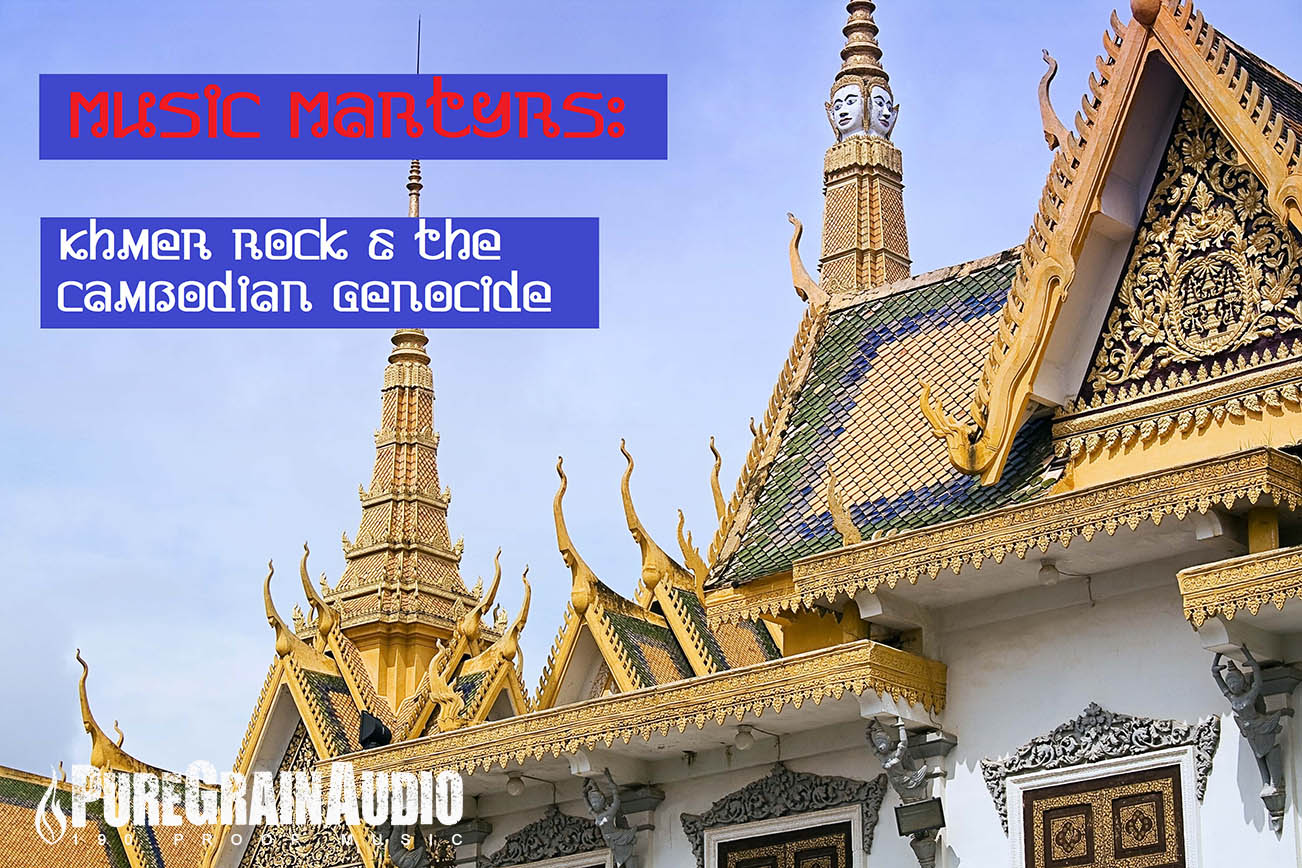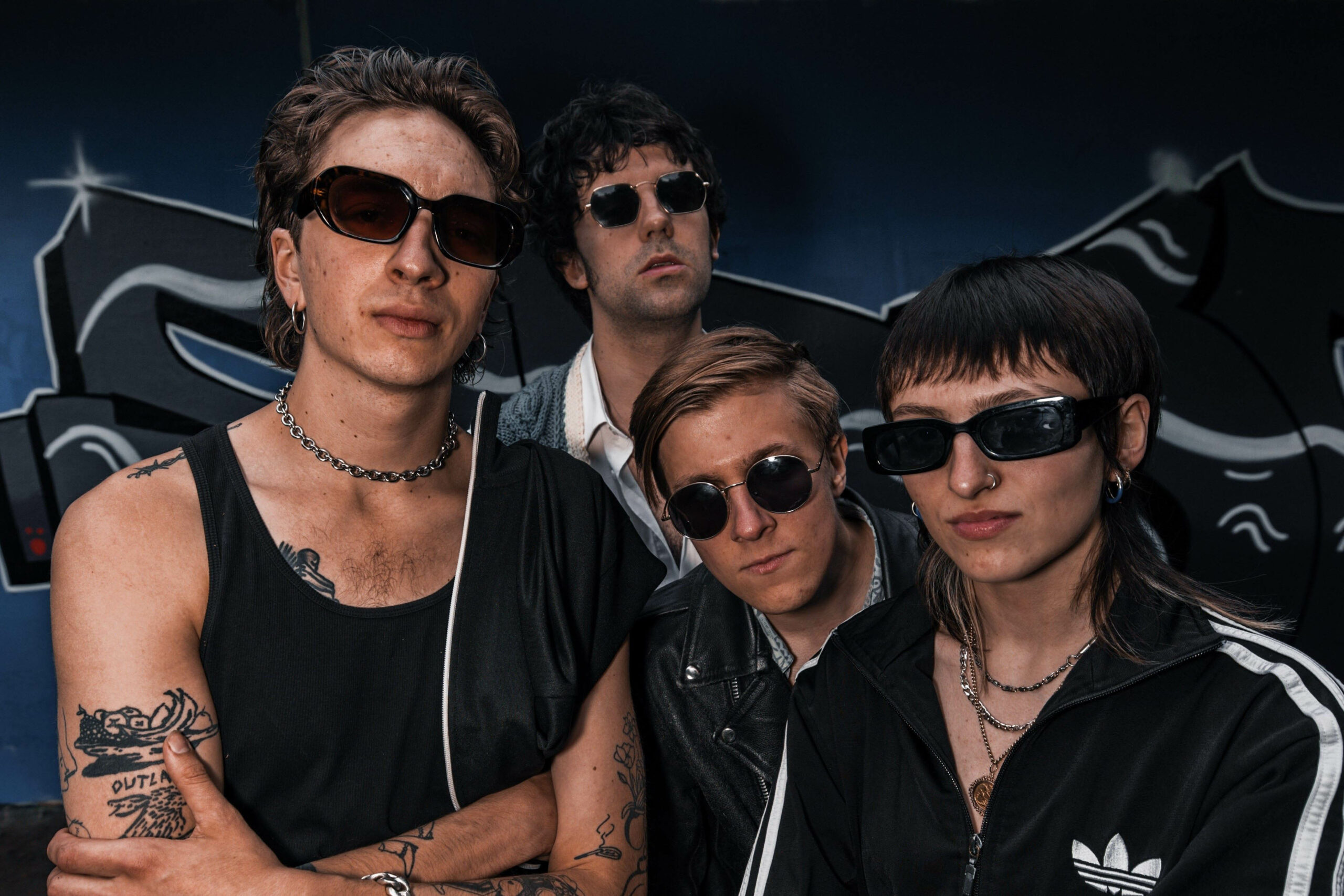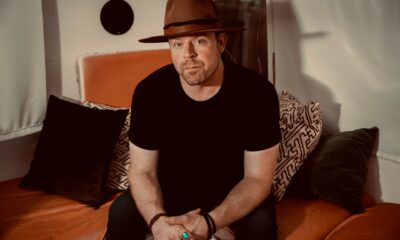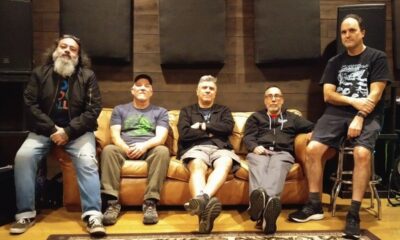Features
Music Martyrs: Khmer Rock and the Cambodian Genocide
While Americans were getting down at disco clubs, these musicians were being massacred by an infamous regime. Find out more about these music martyrs in our piece on Cambodian rock music, known as “Khmer rock”.

The 1970’s was a progressive era for rock music and the west. Many of the hippy values of the sixties had cemented themselves into the mainstream. Questioning authority was almost cliché, with opposition to American involvement in the Vietnam War being the status quo. In the latter half of the decade, punk culture took hold of the youth in America and the UK, epitomized by the left-leaning ideals of The Clash and the vulgar sensibilities of the Sex Pistols. But, while artists in the west enjoyed a loosening of moral constraints in music, Cambodian artists were being massacred for making music in the first place.
The story of rock music in Cambodia is preceded by the French withdrawal from Indochina in 1953. Cambodia declared independence that same year in the form of a constitutional monarchy. The entire region was challenged by post-colonial power struggles, further escalating with the break out of the Vietnam War in 1955. By 1960, then-Cambodian King Norodom Sihanouk declared neutrality in the Cold War, though he did allow Vietnamese communists to incorporate Cambodian territory into their supply lines. The perceived communist sympathies within the monarchy made Sihanouk unpopular, sewing the seeds for a conflict of their own.
Here’s a compilation of Khmer Rock television appearances set to “Nek Na Min Rom” by Houy Meas & Dara Chom Chan.
Despite these challenging times, Cambodians enjoyed a musical renaissance that grew from the capital Phnom Penh. By the late ‘60s, the U.S military had a firm base within South Vietnam following President Lyndon B. Johnson’s intervention in 1963. Signals from American Forces Radio, which played popular artists from the west, found their way to Cambodia and fused with traditional sounds from the region. Local musicians would play in western-stylized rock bands while incorporating Khmer lyrics and microtonal singing. Inspired by artists like The Beatles, Santana, and The Doors, this new wave of Cambodian rockers wrote the soundtrack to a fragmenting political situation.
In 1970, King Sihanouk lost power to a coup at the hands of his Prime Minister General, Lon Nol. Declaring the right-wing Khmer Republic, Nol lead a nationalistic campaign against the previously tolerated Vietnamese communists on the border regions. After making a convenient alliance with the ousted king, the communist insurgents fought back against the new republic and ignited the Cambodian Civil War.
Check the rad organ on “Sra Mouy Keo” by Ros Sereysothea.
Having won the presidency in 1968, President Richard Nixon felt compelled to deal with the communist insurgency in Cambodia and assist his new Cold War ally, Lon Nol. Without congressional approval, the Nixon administration authorized a covert bombing campaign in eastern Cambodia that lasted from 1969 until 1973. The operation was a disastrous failure that killed thousands of civilians and drove many into the arms of the communists. With an influx of Cambodian members, the communists re-branded themselves as the Khmer Rouge and took orders from the enigmatic revolutionary Pol Pot.
Facing widespread anti-war demonstrations and a rising death toll, Nixon ended U.S involvement in Vietnam in 1973. By 1975, the North Vietnamese had taken Saigon and the Khmer Rouge had marched into Phnom Penh and renamed the country Democratic Kampuchea. As the new head of state, Pol Pot issued a series of devastating reforms that saw millions forced into labor teams. Nearly all city dwellers were taken from their homes and brought to rural labor camps, places that would later be called “the killing fields”.
Watch this haunting footage of Phnom Penh after the Khmer Rouge forced most of its inhabitants into rural work camps.
The next four years would be known as one of the most infamous horrors of the twentieth century. Practicing a hybrid of Marxism–Leninism and Maoism, Pol Pot killed untold numbers of Cambodians through forced labor, torture, and famine. The Khmer Rouge purged the population of all traditional values and outside influences. The prime targets for the regime were ex-government officials, religious figures, ethnic minorities, intellectuals, and of course, artists. The majority of the musicians from Phnom Penh died in the killing fields, with their bodies being lost to mass graves across the country. Though numbers vary, it is estimated that between 1.2 million and 2.8 million people were killed in the Cambodian genocide.
The Democratic Kampuchea came to an end when Pol Pot’s former allies in Vietnam annexed the country following repeated border clashes. With nearly one fourth of the population decimated, the wounds of the genocide still affect Cambodia today. The music of the Phenom Penh scene was preserved by survivors, though many of the original master tapes were destroyed by the Khmer Rouge. As the political situation in Cambodia stabilized in the ‘90s, western tourists made more visits to the recovering nation. In 1994, American tourist Paul Wheeler heard Khmer rock in restaurants around Siem Reap and bought six tapes at a local record store. Upon returning to the U.S., he showed his findings to a friend at Parallel World, a small record label in New York.
The result was the compilation Cambodian Rocks. The record failed to credit the artists of the 22 tracks used, but it was the first time western audiences heard Khmer rock. Enjoying cult status, Cambodian Rocks was eventually widely discussed on the internet and the artists were finally credited. The majority of the tracks were sung by Ros Serey Sothea, who was once called “Queen with the Golden Voice” by former King Sihanouk. Another frequent name on the record was Sinn Sisamouth, whose pro-Khmer Republic songs made enemies with both the monarchy and the Khmer Rouge. There was also Pen Ran, who stood out from the rest with her humorous personality and risqué lyrics. All three of these artists disappeared during the genocide and no details are known regarding their presumed deaths. Though most perished, some members of the scene survived through posing as peasants and other means.
The story of Khmer rock is like none other in rock music. Though everyone between The Beatles and Marilyn Manson faced backlash for their lyrics and views, no popular artist from the west has faced anything like the Phnom Penh scene. The musicians showed that despite foreign insurgences, political coups, and civil wars, music will still be played in some form or another. But most importantly, Cambodian rock and roll shows that sometimes daring to play music at all is a form of rebellion.
Here’s a stream of the once mysterious Cambodian Rocks, which thankfully now has a full list of artists.
-

 Music6 days ago
Music6 days agoTake That (w/ Olly Murs) Kick Off Four-Night Leeds Stint with Hit-Laden Spectacular [Photos]
-

 Alternative/Rock7 hours ago
Alternative/Rock7 hours agoThe V13 Fix #011 w/ Microwave, Full Of Hell, Cold Years and more
-

 Alternative/Rock1 week ago
Alternative/Rock1 week agoThe V13 Fix #010 w/ High on Fire, NOFX, My Dying Bride and more
-

 Alternative/Rock2 weeks ago
Alternative/Rock2 weeks agoA Rejuvenated Dream State are ‘Still Dreaming’ as They Bounce Into Manchester YES [Photos]
-

 Features6 days ago
Features6 days agoTour Diary: Gen & The Degenerates Party Their Way Across America
-

 Culture1 week ago
Culture1 week agoDan Carter & George Miller Chat Foodinati Live, Heavy Metal Charities and Pre-Gig Meals
-

 Music1 week ago
Music1 week agoReclusive Producer Stumbleine Premieres Beat-Driven New Single “Cinderhaze”
-

 Indie7 hours ago
Indie7 hours agoDeadset Premiere Music Video for Addiction-Inspired “Heavy Eyes” Single











